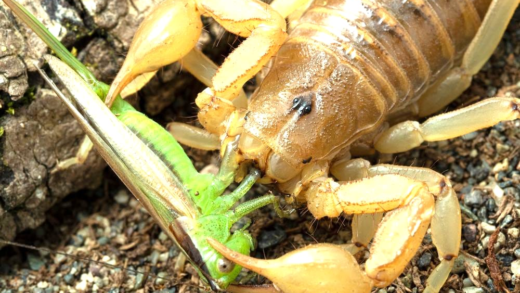Crustaceans are vital aquatic animals with unique characteristics, diverse diets, and significant roles in ecosystems. They face challenges such as overfishing and habitat loss, necessitating conservation efforts.
What Are Crustaceans?
Crustaceans are a diverse group of aquatic animals that belong to the class Crustacea. They are characterized by their hard exoskeleton, segmented bodies, and jointed appendages. Common examples include lobsters, shrimp, and crabs. These fascinating creatures have adapted to various environments, showcasing remarkable characteristics that make them unique.
Key characteristics of crustaceans include:
- Exoskeleton: A hard outer shell that provides protection and support.
- Jointed limbs: Specialized appendages that aid in movement and feeding.
- Gills: Most crustaceans breathe underwater using gills, allowing them to extract oxygen from water.
- Compound eyes: Many crustaceans have compound eyes that provide a wide field of vision.
These features enable crustaceans to thrive in various aquatic habitats, from deep oceans to freshwater lakes.
Types of Crustaceans
Crustaceans are incredibly diverse, with thousands of species categorized into various groups. Some of the most well-known types include:
- Lobsters: Large, clawed crustaceans that are often found in deep waters. They are popular in seafood dishes.
- Shrimp: Smaller and more delicate than lobsters, shrimp are widely consumed and are known for their sweet taste.
- Crabs: Recognizable by their broad bodies and claws, crabs can be found in both marine and freshwater environments.
- Barnacles: Uniquely, these crustaceans attach themselves to surfaces like rocks and ship hulls.
Each type of crustacean has unique adaptations that help them survive and thrive in their specific environments.
Where Do Crustaceans Live?
Crustaceans inhabit a wide range of environments, showcasing their adaptability. You can find them in:
- Marine environments: The majority of crustaceans live in oceans, from shallow coastal waters to deep sea.
- Freshwater habitats: Many species thrive in rivers, lakes, and ponds, demonstrating their versatility.
- Land: Some crustaceans, like certain types of crabs, can live on land, often in moist environments.
These diverse habitats provide crustaceans with various food sources and environmental conditions, allowing them to adapt and flourish.
How Do Crustaceans Adapt?
Crustaceans exhibit remarkable adaptations that enable them to survive in diverse environments. These adaptations can be physical, behavioral, or physiological, ensuring their survival across varying habitats.
- Physical adaptations: Many crustaceans possess specialized body structures. For instance, the hard exoskeleton provides protection from predators, while flexible joints allow for effective movement. Some species, like the fiddler crab, have one oversized claw used for attracting mates and warding off rivals.
- Behavioral adaptations: Crustaceans often display unique behaviors to enhance survival. For example, some shrimp engage in symbiotic relationships with sea anemones, gaining protection while providing food for their hosts. Others, like certain crabs, burrow into the sand to escape predators.
- Physiological adaptations: Crustaceans have developed efficient gills for oxygen extraction in water, which is crucial for their survival in aquatic environments. Some species can also tolerate varying salinity levels, allowing them to thrive in both marine and freshwater habitats.
These adaptations highlight the resilience of crustaceans, enabling them to occupy a wide range of ecological niches.
The Role of Crustaceans in Ecosystems
Crustaceans play a vital role in ecosystems, contributing to both ecological balance and human economies. Their presence is crucial in various food webs and nutrient cycles.
- Food source: Crustaceans serve as a primary food source for many marine animals, including fish, birds, and mammals. Their abundance supports diverse predator populations.
- Nutrient cycling: As scavengers, crustaceans help decompose organic matter, returning essential nutrients to the ecosystem. This process fosters healthy aquatic environments.
- Habitat formation: Some crustaceans, like coral reef-building species, contribute to habitat structure, providing shelter for other marine organisms.
Understanding the ecological significance of crustaceans emphasizes the need for their conservation, as their decline can disrupt entire ecosystems.
Crustacean Reproduction
Crustacean reproduction varies widely among species, showcasing diverse strategies that ensure the continuation of their populations.
- External fertilization: Many crustaceans, such as shrimp and crabs, reproduce through external fertilization, where eggs are fertilized outside the female’s body. This method often results in large numbers of eggs to increase survival chances.
- Larval stages: Crustaceans typically undergo several larval stages before reaching maturity. For example, lobster larvae, called phyllosoma, are planktonic and drift in the ocean before settling to the seafloor.
- Parental care: Some species, like certain crabs, exhibit parental care, where the female guards her eggs until they hatch, enhancing survival rates.
These reproductive strategies illustrate the adaptability of crustaceans, ensuring their persistence in various environments.
What Do Crustaceans Eat?
Crustaceans are omnivores, meaning they eat both plant and animal matter. Their diets can vary significantly based on their species and habitat. Understanding what crustaceans eat is essential for grasping their role in ecosystems.
- Filter Feeders: Some crustaceans, like barnacles, feed by filtering plankton and small particles from the water.
- Scavengers: Many crustaceans, such as crabs, scavenge on dead organisms, helping to recycle nutrients in their habitats.
- Predators: Certain species, like mantis shrimp, actively hunt smaller fish and other invertebrates.
- Herbivores: Some crustaceans graze on algae and plant material, contributing to the health of aquatic ecosystems.
Crustaceans employ various foraging methods, including burrowing in sediments, scavenging on the ocean floor, and actively hunting prey. Their diverse diets allow them to adapt to different environments and play crucial roles in food webs.
Differences Between Lobsters, Shrimp, and Crabs
Lobsters, shrimp, and crabs are some of the most recognizable crustaceans, but they have distinct differences. Understanding these can help in identifying them and appreciating their unique traits.
- Lobsters: Typically larger, lobsters have long bodies and large claws. They prefer rocky or sandy ocean floors and are known for their culinary value.
- Shrimp: Generally smaller than lobsters, shrimp have a more delicate structure. They are often found in both freshwater and saltwater, famous for their sweet, tender meat.
- Crabs: Crabs are characterized by their broad, flat bodies and claws. They can adapt to various environments, including terrestrial habitats, and are often seen scuttling sideways.
These differences not only help in identifying each type but also illustrate their adaptations to specific ecological niches.
Crustaceans in Human Diets and Economies
Crustaceans hold significant value in human diets and economies. They are a primary source of protein for millions worldwide, contributing to both nutrition and culinary diversity.
- Seafood Industry: Crustaceans, especially shrimp, crabs, and lobsters, are central to the global seafood market, driving economies in coastal regions.
- Cultural Significance: In many cultures, crustaceans are considered delicacies, featured in various traditional dishes.
- Nutrition: Rich in protein, vitamins, and minerals, crustaceans are an essential part of a balanced diet.
The impact of crustaceans on human life extends beyond food, influencing trade and cultural practices across the globe.
Threats to Crustaceans in the Wild
Despite their ecological importance, crustaceans face numerous threats in the wild. Understanding these challenges is crucial for conservation efforts.
- Overfishing: Many crustacean populations are declining due to unsustainable fishing practices, impacting biodiversity.
- Habitat Loss: Coastal development and pollution degrade habitats essential for crustaceans’ survival.
- Climate Change: Rising ocean temperatures and acidification threaten crustacean species and their reproductive cycles.
Addressing these threats is vital for maintaining healthy ecosystems and ensuring the survival of crustaceans.





Comments are closed.